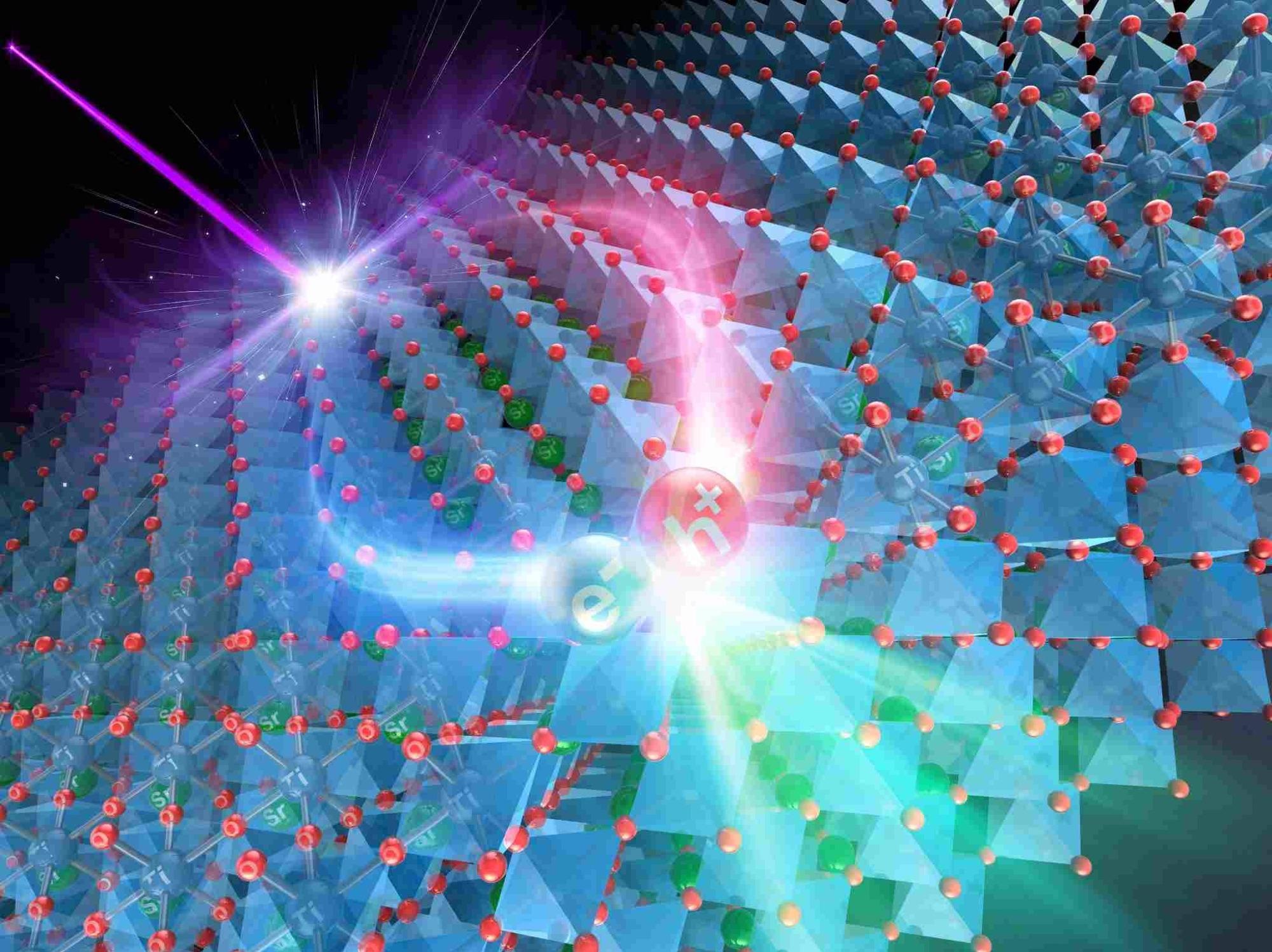Jun 30 2021
For several years, scientists have focused on designing technologies to combat the crisis of imminent climate change. All these researchers share a common goal — that is, identifying sustainable energy sources that can substitute environmentally toxic fossil fuels.
 Schematic band diagram model for carrier recombination. Charge recombination occurs when mobile charge carriers present in the material that are exposed to light annihilate each other and can hamper the energy efficiency of the photocatalyst. Image Credit: Masashi Kato, Nagoya Institute of Technology.
Schematic band diagram model for carrier recombination. Charge recombination occurs when mobile charge carriers present in the material that are exposed to light annihilate each other and can hamper the energy efficiency of the photocatalyst. Image Credit: Masashi Kato, Nagoya Institute of Technology.
“Photocatalysts” that fuel an artificial process that, in turn, replicates photosynthesis — the process in which solar energy is changed to useful materials — are particularly promising, as it is now possible to design the technology required for them.
Crystalline materials, like strontium titanate (SrTiO3) that are used as photocatalysts in solar devices, may lead to that pathway.
SrTiO3 is also appealing for many other reasons. For instance, it could be used in fuel cell components and resistive switches. SrTiO3 is versatile in nature and this aspect has encouraged physicists to investigate its numerous materials properties in more detail. However, in order to know more about the properties of SrTiO3, it is important to know a bit more about them.
SrTiO3 and other photocatalytic materials are generally “doped” with chemicals, like niobium (Nb), that help enhance their electrical properties. However, the efficiency of photocatalysts is hampered by a process known as “charge recombination.” During this process, mobile charge carriers, like “electrons” and “holes,” present in the material can annihilate each other upon exposure to light.
A few studies have demonstrated that charge recombination is impacted by the presence of crystal defects, however, the effect of Nb doping on the material characteristics of SrTiO3 is not clearly known. This is precisely what the research team from the Nagoya Institute of Technology, Japan, headed by Professor Masashi Kato, set out to find out.
The team observed the effects of low-concentration Nb doping and also the effect of no doping on the surface recombination in SrTiO3 crystals. The study has been published in the Journal of Physics D: Applied Physics.
Quantitatively measuring the effects of surfaces and niobium impurities in SrTiO3 on carrier recombination can help us design photocatalysts with an optimal structure for artificial photosynthesis.
Masashi Kato, Professor, Nagoya Institute of Technology
The researchers used a method, known as “microwave photoconductivity decay,” to analyze the “decay” patterns or surface recombination of undoped SrTiO3 samples and also those doped with varying concentrations of Nb. They used another method, known as “time-resolved photoluminescence decay,” to further investigate the bulk carrier recombination properties of doped specimens and the varying energy levels introduced by Nb doping.
The team observed that the recombination of excited carriers does not depend on their concentration, suggesting that they recombined through “Shockley-Read-Hall” and “surface” processes (which are impervious to the concentration of excited carriers). Additionally, the doped sample displayed faster decay curves, which was probably caused by the introduction of a recombination center by Nb doping.
Doping the material with high Nb concentrations revealed negative effects on carrier doping. Furthermore, the surface recombination and eventually its overall efficiency are influenced by the size — not the shape — of the photocatalyst.
The researchers surmised that moderately Nb-doped SrTiO3 could, in fact, be more advantageous than pure SrTiO3, particularly when operated at higher temperatures. These results can help design SrTiO3 photocatalysts with higher energy conversion and lower surface recombination, resulting in the development of sustainable and efficient energy sources.
We are confident that our findings can accelerate the development of artificial photosynthesis technologies, ultimately contributing towards a greener, more sustainable society.
Masashi Kato, Professor, Nagoya Institute of Technology
Journal Reference:
Kato, M., et al. (2021) Carrier recombination in SrTiO3 single crystals: impacts of crystal faces and Nb doping. Journal of Physics D: Applied Physics. doi.org/10.1088/1361-6463/ac073e.